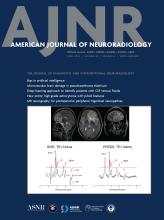Review ArticleNeurointervention
Intraluminal Flow Diverter Design Primer for Neurointerventionalists
Alexander A. Oliver, Yigit Can Senol, Cem Bilgin, Jeremy E. Schaffer, Ramanathan Kadirvel, David F. Kallmes and John M. Wainwright
American Journal of Neuroradiology April 2024, 45 (4) 365-370; DOI: https://doi.org/10.3174/ajnr.A8076
Alexander A. Oliver
aFrom the Department of Biomedical Engineering and Physiology (A.A.O., D.F.K.), Mayo Clinic Graduate School of Biomedical Sciences, Rochester, Minnesota
bDepartment of Radiology (A.A.O., C.B., R.K., D.F.K.), Mayo Clinic, Rochester, Minnesota
Yigit Can Senol
cDepartment of Neurologic Surgery (Y.C.S., R.K.), Mayo Clinic, Rochester, Minnesota
Cem Bilgin
bDepartment of Radiology (A.A.O., C.B., R.K., D.F.K.), Mayo Clinic, Rochester, Minnesota
Jeremy E. Schaffer
dFort Wayne Metals (J.E.S.), Fort Wayne, Indiana
Ramanathan Kadirvel
bDepartment of Radiology (A.A.O., C.B., R.K., D.F.K.), Mayo Clinic, Rochester, Minnesota
cDepartment of Neurologic Surgery (Y.C.S., R.K.), Mayo Clinic, Rochester, Minnesota
David F. Kallmes
aFrom the Department of Biomedical Engineering and Physiology (A.A.O., D.F.K.), Mayo Clinic Graduate School of Biomedical Sciences, Rochester, Minnesota
bDepartment of Radiology (A.A.O., C.B., R.K., D.F.K.), Mayo Clinic, Rochester, Minnesota
John M. Wainwright
eMIVI Neuroscience (J.M.W.), Eden Prairie, Minnesota
fThe Henry Samueli School of Engineering (J.M.W.), University of California, Irvine, California

References
- 1.↵
- Brinjikji W,
- Murad MH,
- Lanzino G, et al
- 2.↵
- Dandapat S,
- Mendez-Ruiz A,
- Martínez-Galdámez M, et al
- 3.↵
- 4.↵
- Rouchaud A,
- Ramana C,
- Brinjikji W, et al
- 5.↵
- 6.↵
- 7.↵
- 8.↵
- 9.↵
- 10.↵
- 11.↵
- Suzuki T,
- Takao H,
- Fujimura S, et al
- 12.↵
- Kastrati A,
- Mehilli J,
- Dirschinger J, et al
- 13.↵
- 14.↵
- Starke RM,
- Thompson J,
- Pagani A, et al
- 15.↵
- Kallmes DF,
- Ding Y,
- Dai D, et al
- 16.↵
- Rogers C,
- Edelman ER
- 17.↵
- Hong B,
- Wang K,
- Huang Q, et al
- 18.↵
- Sadasivan C,
- Cesar L,
- Seong J, et al
- 19.↵
- Mut F,
- Cebral J
- 20.↵
- 21.↵
- Shapiro M,
- Raz E,
- Becske T, et al
- 22.↵
- Ding Y,
- Tieu T,
- Kallmes D
- 23.↵
- Girdhar G,
- Andersen A,
- Pangerl E, et al
- 24.↵
- Tan LA,
- Keigher KM,
- Munich SA, et al
- 25.↵
- Lieber BB,
- Sadasivan C
- 26.↵
- 27.↵
- Oliver AA,
- Carlson KD,
- Bilgin C, et al
- 28.↵
- 29.↵
- Matsuda Y,
- Jang DK,
- Chung J, et al
- 30.↵
- 31.↵
- Yoshizawa K,
- Kobayashi H,
- Kaneki A, et al
- 32.↵
- 33.↵
- Xu L,
- Zhao B,
- Liu X, et al
- 34.↵
- 35.↵
- Liu P,
- Liu Y,
- Li P, et al
- 36.
- Bhogal P,
- Moreno RM,
- Ganslandt O, et al
In this issue
American Journal of Neuroradiology
Vol. 45, Issue 4
1 Apr 2024
Advertisement
Alexander A. Oliver, Yigit Can Senol, Cem Bilgin, Jeremy E. Schaffer, Ramanathan Kadirvel, David F. Kallmes, John M. Wainwright
Intraluminal Flow Diverter Design Primer for Neurointerventionalists
American Journal of Neuroradiology Apr 2024, 45 (4) 365-370; DOI: 10.3174/ajnr.A8076
0 Responses
Jump to section
Related Articles
- No related articles found.
Cited By...
This article has been cited by the following articles in journals that are participating in Crossref Cited-by Linking.
- Michael Gaub, Greg Murtha, Molly Lafuente, Matthew Webb, Anqi Luo, Lee A. Birnbaum, Justin R. Mascitelli, Fadi Al SaieghJournal of Clinical Medicine 2024 13 14
- Dan Adrian Popica, Jonathan Cortese, Alexander A Oliver, Vincent Plaforet, Ignacio Molina Diaz, Fernanda Rodriguez-Erazú, Léon Ikka, Cristian Mihalea, Vanessa Chalumeau, David F Kallmes, Jildaz Caroff, Laurent SpelleJournal of NeuroInterventional Surgery 2024
- Fernanda Rodriguez-Erazú, Gustavo M Cortez, Demetrius K Lopes, Salvador F Gutierrez-Aguirre, Otavio Frederico De Toledo, Amin Aghaebrahim, Eric Sauvageau, David F Kallmes, Jens Fiehler, Ricardo A HanelJournal of NeuroInterventional Surgery 2024
- Evaluation of FeMnN alloy bioresorbable flow diverters in the rabbit elastase induced aneurysm modelAlexander A. Oliver, Cem Bilgin, Jonathan Cortese, Esref A. Bayraktar, Daying Dai, Yong Hong Ding, Kent D. Carlson, Adam J. Griebel, Jeremy E. Schaffer, Mitchell L. Connon, Dan Dragomir-Daescu, Ramanathan Kadirvel, Roger J. Guillory, David F. KallmesFrontiers in Bioengineering and Biotechnology 2025 13
- Santiago Estevez-Areco, Laura Obradó, Romina Muñoz, Ignacio LarrabideExpert Review of Medical Devices 2025 22 3
- Alexander A. Oliver, Cem Bilgin, Mitchell L. Connon, Andrew J. Vercnocke, Esref A. Bayraktar, Jonathan Cortese, Daying Dai, Yong Hong Ding, Sarah A. Erdahl, John Pederson, Kent D. Carlson, Adam J. Griebel, Jeremy E. Schaffer, Dan Dragomir-Daescu, Ramanathan Kadirvel, Roger J. Guillory, David F. KallmesBioactive Materials 2025 48
- Alexander A. Oliver, Julien Ognard, Jonathan Cortese, Esref A. Bayraktar, Aleksandra M. Zielonka, David F. Kallmes, Brandon J. Tefft, Ramanathan KadirvelJournal of Neuroradiology 2025 52 4
- Radiopaque FeMnN-Mo composite drawn filled tubing wires for braided absorbable neurovascular devicesAdam J. Griebel, Petra Maier, Henry Summers, Benjamin Clausius, Isabella Kanasty, Weilue He, Nicholas Peterson, Carolyn Czerniak, Alexander A. Oliver, David F. Kallmes, Ramanathan Kadirvel, Jeremy E. Schaffer, Roger J. GuilloryBioactive Materials 2024 40
More in this TOC Section
Similar Articles
Advertisement











